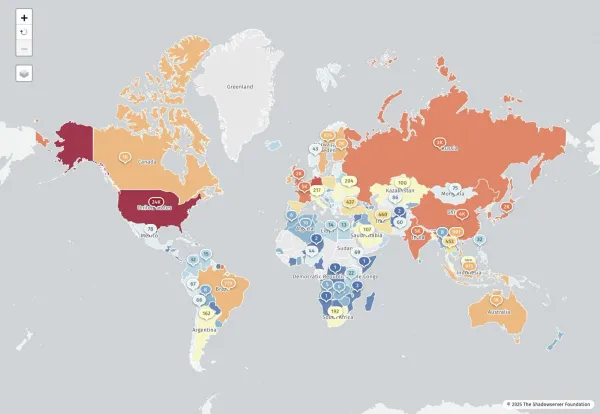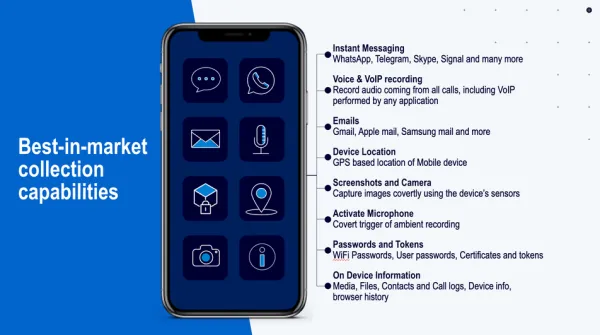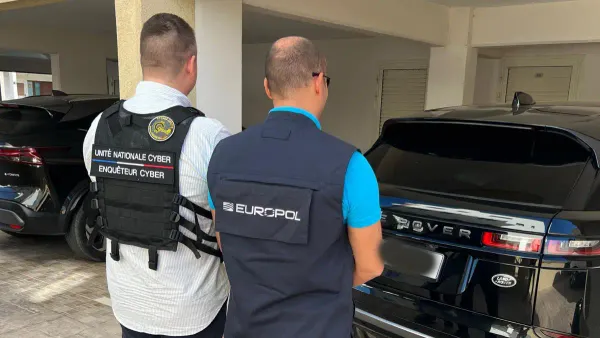McDonald's Digital Disasters: A Comprehensive Look at the Golden Arches' Technology Troubles

How the world's largest fast-food chain became a cautionary tale for AI adoption, outsourcing, and cybersecurity
McDonald's has long been a pioneer in fast-food innovation, from introducing the first drive-thru window to rolling out self-service kiosks. But the company's aggressive push into digital technology has also made it a magnet for security vulnerabilities, clever hacks, and operational missteps that serve as stark reminders of the risks inherent in rapid technological adoption.
The Latest Catastrophe: AI Hiring Bot Exposes 64 Million Applicants
In July 2025, McDonald's suffered perhaps its most embarrassing security breach yet when researchers discovered that the company's AI-powered hiring system could be accessed using the password "123456." The breach exposed the personal data of potentially 64 million job applicants who had interacted with "Olivia," the AI chatbot that handles recruitment for about 90% of McDonald's franchise locations.
Security researchers Ian Carroll and Sam Curry stumbled upon the vulnerability while investigating McDonald's recruitment process. Within just 30 minutes, they had gained administrator access to the McHire platform, built by AI firm Paradox.ai. The breach was as simple as it was devastating: a small "Paradox team members" link led to a login page that accepted the default username and password combination "123456."
The scope of the breach was staggering. Once inside the system, the researchers discovered they could access virtually every job application submitted to McDonald's over several years. The exposed data included names, email addresses, phone numbers, home addresses, work availability, and complete chat logs of conversations with the AI recruiter. Some records even contained authentication tokens and employment status updates.
The chatbot, named Olivia, has been a source of frustration for job applicants long before the security issues came to light. Many users reported that the AI would get stuck in loops, providing nonsensical responses or directing applicants in circles between the hiring website and the chatbot itself. One Reddit user complained that when they tried to explain their confusion to Olivia, the AI responded with completely unrelated text.
Beyond basic recruitment, Olivia also administered personality tests featuring bizarre imagery, including blue-skinned humanoid aliens that applicants were supposed to identify with. These "Traitify" assessments, used across multiple companies including Olive Garden and FedEx, often left job seekers bewildered by surreal scenarios and cryptic instructions.
McDonald's response was swift but defensive. The company blamed Paradox.ai entirely, stating they were "disappointed by this unacceptable vulnerability from a third-party provider." Paradox.ai acknowledged the breach and announced the launch of a bug bounty program, though the company's initial lack of a security disclosure contact made it difficult for researchers to report the vulnerability responsibly.
The Outsourcing Experiment: When Your Drive-Thru Order Goes Cross-Country
Long before AI chatbots were taking job applications, McDonald's was experimenting with another form of remote work that many customers never realized was happening: outsourcing drive-thru orders to call centers hundreds or even thousands of miles away.
Starting in the early 2000s, McDonald's began testing a system where drive-thru orders would be routed to remote call centers rather than taken by employees at the restaurant. When a car pulled up to the drive-thru speaker, sensors would activate the ordering system, but instead of talking to someone inside the restaurant, customers were connected to workers in distant locations—sometimes in other states or even other time zones.
The system was surprisingly sophisticated. Remote order-takers would receive the order through internet connections, and to ensure accuracy, cameras would take pictures of each vehicle and link them to the corresponding order. Restaurant employees would then receive the completed order details and prepare the food for the photographed vehicle.
The outsourcing reached its peak effectiveness in Hawaii, where over half of McDonald's locations used remote order-takers based in Texas. Workers at the Texas call centers acknowledged the challenges, with one telling KITV: "We've been out here for about seven months, so it kind of takes me a while just to understand," referring to the difficulty of understanding Hawaiian accents and local dialects.
The economics were compelling for franchise owners. According to a 2004 New York Times report, a McDonald's franchisee in Missouri found that outsourced order-taking allowed him to serve 30 additional cars every hour while significantly reducing error rates. The system was particularly beneficial for locations struggling with staffing shortages or those operating during low-traffic hours when having a dedicated order-taker wasn't cost-effective.
Other chains, including Jack in the Box, also experimented with the technology. At nighttime locations with limited staff, orders would be piped to regional call centers where a handful of workers could handle drive-thru orders for hundreds of restaurants across multiple states.
Despite initial success, the remote ordering system eventually fell out of favor as McDonald's shifted focus to AI-powered voice recognition technology and mobile ordering platforms. The company's 2019 acquisition of voice technology startup Apprente signaled its intention to replace human order-takers—both local and remote—with artificial intelligence.
The Kiosk Hacks: Gaming the System for Free Food
McDonald's self-service kiosks, introduced widely in 2015, were designed to increase order accuracy and allow for more customization options. But enterprising customers quickly discovered ways to exploit the system's pricing logic to walk away with free food.
The most famous hack involved a simple mathematical exploit. In 2019, two friends posted a viral video demonstrating how to get a free burger by manipulating the kiosk's pricing system. Their method was straightforward: order 10 burgers for $1 each, then remove the meat patty from each burger, which discounted each burger by $1.10. This created a negative balance of $0.10 per burger, providing enough surplus to cover the cost of one regular-priced burger, bringing the total order to $0.00.
The result was one free regular burger and ten buns with ketchup and pickles—technically fulfilling the order while costing McDonald's money. The kiosk would display "no payment required" and process the order normally.
International variations proved even more sophisticated. In Germany, software developers Lenny Bakkalian and David Albert discovered two separate loopholes in McDonald's digital systems. The first involved manipulating the survey system that typically rewards customers with free drink coupons. By replicating the website's coding structure, they could generate unlimited beverage vouchers without actually taking surveys.
Their second hack was more technically complex, involving intercepting communication between McDonald's mobile app and payment processing systems. Using a laptop as a proxy, they could modify order prices to zero before the payment information was processed, effectively allowing them to order any amount of food for free.
When they demonstrated the hack for a €17 order, the restaurant manager refused their attempt to pay after they explained what they had done, saying "Relax and enjoy it – it's all good." However, the developers chose to donate the food to a homeless person and reported the vulnerability to McDonald's, which was eventually patched in December 2019.
These hacks highlighted fundamental flaws in pricing logic and system architecture. While most customers never attempted such exploits, the incidents demonstrated how even basic mathematical manipulations could exploit gaps in software design. The kiosks' assumption that removing ingredients should always reduce price, regardless of the final total, created unexpected vulnerabilities.
The McMillion Fraud: When Insider Threats Meet Social Engineering
Long before digital breaches became McDonald's primary security concern, the company fell victim to one of the most elaborate insider fraud schemes in corporate history. From 1989 to 2001, Jerome "Jerry" Jacobson—an ex-police officer working as head of security for Simon Marketing, McDonald's promotional game contractor—masterminded the theft of $24 million worth of prizes from the McDonald's Monopoly game.
The scheme was audaciously simple yet sophisticated in execution. Jacobson, known to accomplices as "Uncle Jerry," exploited his position overseeing the production and distribution of game pieces. When a foreign supplier mistakenly sent him a package of tamper-proof seals, he realized he could open and reseal the packages containing winning pieces. To avoid detection by the independent auditor who shadowed him, Jacobson would retreat to airport bathroom stalls during business trips, where he would swap high-value winning pieces with worthless ones before resealing the packages.
The network Jacobson assembled reads like a crime novel. His accomplices included mobsters connected to the Colombo crime family, psychics, strip club owners, drug traffickers, and even a family of Mormons. Gennaro "Jerry" Colombo, a Brooklyn mobster who became Jacobson's primary partner, even appeared in a nationally televised McDonald's commercial in 1995, celebrating his fraudulent win of a Dodge Viper. For 12 years, almost no legitimate million-dollar winners existed—the top prizes were systematically diverted to Jacobson's network.
The FBI's investigation, dubbed Operation Final Answer, employed sophisticated social engineering tactics. After receiving an anonymous tip in 2000, agents conducted wiretaps and launched an elaborate sting operation involving fake TV commercials and undercover agents posing as production crews. The investigation culminated in the arrest of more than 50 conspirators, with Jacobson sentenced to 37 months in prison and ordered to pay $12.5 million in restitution. The scandal inspired the HBO documentary series "McMillions" and exposed how even McDonald's most beloved promotions could be corrupted from within.
A Pattern of Breaches: McDonald's Ongoing Cybersecurity Struggles
The AI hiring bot breach represents just the latest in a series of cybersecurity incidents that have plagued McDonald's in recent years, revealing a pattern of vulnerabilities across the company's digital infrastructure that extends from the analog fraud of the Monopoly scandal to today's digital threats.
In June 2021, McDonald's suffered a significant data breach affecting customers and employees across multiple countries. Hackers gained unauthorized access to the company's systems and stole customer emails, phone numbers, and delivery addresses in South Korea and Taiwan, along with employee information including names and contact details in Taiwan. The breach also exposed business contact information for US employees and franchisees, plus operational details like restaurant seating capacity and play area square footage.
A 2022 incident saw alleged data dumps appearing on dark web forums, with cybercriminals claiming to have accessed internal McDonald's systems. The 2022 breach reportedly involved not just customer and employee data, but also internal tools and banking information, suggesting a more sophisticated penetration of the company's security infrastructure.
International markets faced additional vulnerabilities. The McDonald's India app, McDelivery, was found to be leaking personal data for more than 2.2 million users, including names, email addresses, phone numbers, home addresses, precise geographical coordinates, and social media profile links.
The pattern suggests systemic issues beyond individual incidents. Each breach revealed different types of vulnerabilities: weak default passwords, insufficient access controls, inadequate data protection, and poor oversight of third-party vendors. The recurring nature of these incidents indicates that McDonald's rapid digital transformation may have prioritized speed and functionality over security fundamentals.
The Technology Paradox: Innovation vs. Security
McDonald's technology troubles illustrate a broader challenge facing large corporations in the digital age: the tension between innovation and security. The company's push to automate hiring, streamline operations, and enhance customer experience through technology has created new attack surfaces and operational risks.
The AI hiring system exemplifies this paradox. While Olivia was designed to improve efficiency and reduce human bias in recruitment, the system's poor security implementation and frustrating user experience suggest that the technology was deployed before it was truly ready for widespread use. The password "123456" vulnerability indicates that basic security practices were overlooked in favor of rapid deployment.
Third-party dependencies multiply risks. Many of McDonald's security issues stem from vendors like Paradox.ai rather than the company's own systems. This highlights how modern digital ecosystems create complex webs of interdependence where a single vendor's security failure can compromise an entire organization.
The stakes continue to rise. According to Federal Trade Commission data, consumers reported losing more than $10 billion to fraud in 2023, representing a 14% increase from 2022. As McDonald's and other corporations become increasingly digitized, they become more attractive targets for cybercriminals seeking to exploit both financial systems and personal data.
Looking Forward: Lessons from the Golden Arches
McDonald's technology troubles offer valuable lessons for other organizations navigating digital transformation:
Security must be built in, not bolted on. The password "123456" vulnerability could have been prevented with basic security practices like mandatory password complexity, multi-factor authentication, and regular security audits of vendor systems.
Third-party risk management is crucial. Organizations must hold vendors to the same security standards they apply internally and conduct regular assessments of their digital supply chain.
User experience matters for security. When legitimate users struggle with systems like Olivia, they may seek workarounds that create additional vulnerabilities or abandon the systems entirely.
Transparency builds trust. McDonald's defensive responses to security incidents contrast poorly with organizations that take ownership of problems and communicate clearly about remediation efforts.
McDonald's continues to invest heavily in cybersecurity, launching employee training programs and working to improve its security infrastructure. But the company's recent troubles serve as a reminder that in the rush to digitize operations, fundamental security principles cannot be overlooked.
As artificial intelligence, automation, and digital platforms become increasingly central to business operations across industries, McDonald's experiences offer both a cautionary tale and a roadmap for more secure implementation of transformative technologies. The golden arches may still be gleaming, but they're also a reminder that in the digital age, security vulnerabilities can turn innovative technologies into costly liabilities.
The names and incidents in this article are based on public reporting and security research. McDonald's has stated its commitment to improving cybersecurity practices and working with vendors to address identified vulnerabilities.





